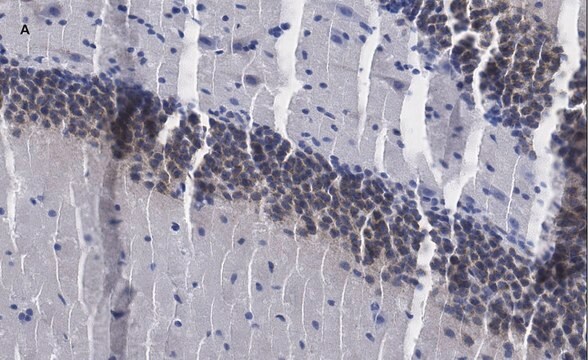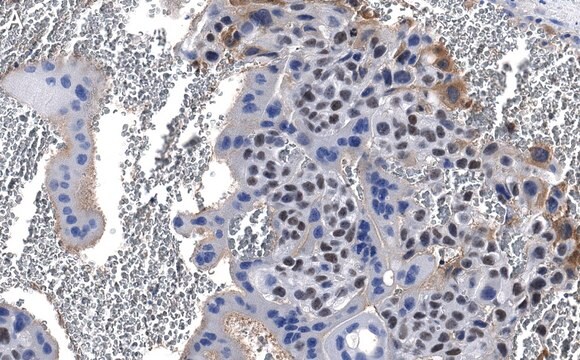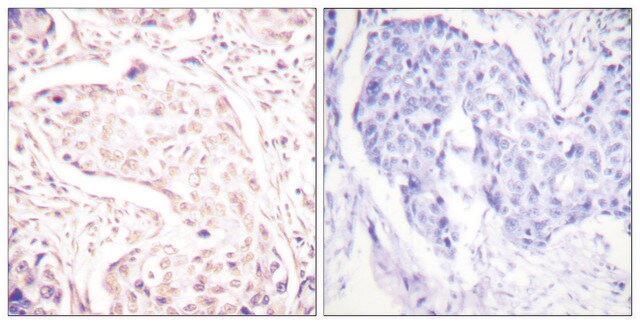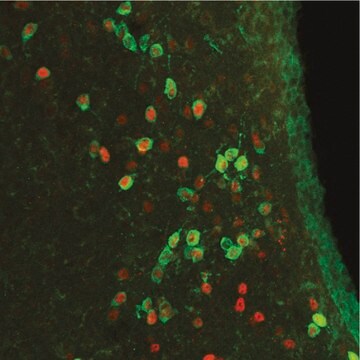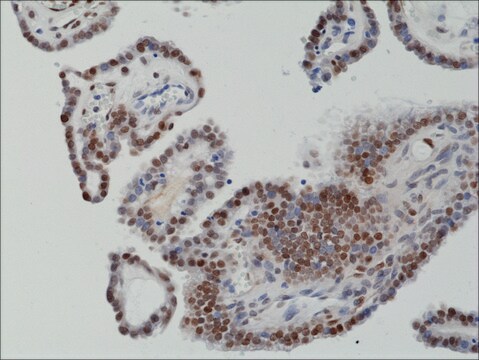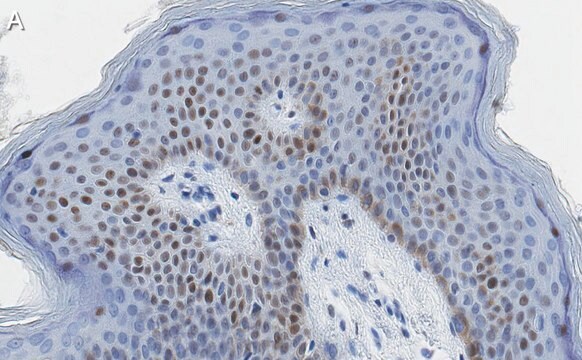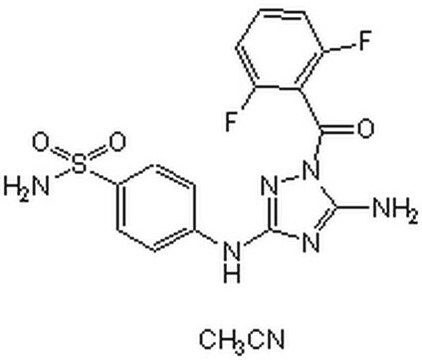詳細
We are committed to bringing you greener alternative products, which adhere to one or more of The 12 Principles of Green Chemistry.This antibody is Preservative-free, produced without the harm or sacrifice of animals and exceptionally stable to allow for ambient shipping and storage if needed and thus aligns with "Waste Prevention", "Designing Safer Chemicals" and "Design for Energy Efficiency".
Click here for more information.
ZooMAb® antibodies represent an entirely new generation of recombinant monoclonal antibodies.Each ZooMAb® antibody is manufactured using our proprietary recombinant expression system, purified to homogeneity, and precisely dispensed to produce robust and highly reproducible lot-to-lot consistency. Only top-performing clones are released for use by researchers. Each antibody is validated for high specificity and affinity across multiple applications, including its most commonly used application. ZooMAb® antibodies are reliably available and ready to ship when you need them.
特異性
Clone 2F15 is a ZooMAb® Rabbit recombinant monoclonal antibody that specifically detects c-Fos phosphorylated on serine 32.
免疫原
KLH-conjugated linear peptide corresponding to 12 amino acids surrounding phosphoserine 32 from the N-terminal region of human c-Fos.
アプリケーション
Quality Control Testing
Evaluated by Western Blotting with a construct containing N-terminal MBP-tagged recombinant c-Fos protein fragment phosphorylated on serine 32.
Western Blotting Analysis (WB): A 1:20,000 dilution of this antibody detected a construct containing N-terminal MBP-tagged recombinant c-Fos protein fragment phosphorylated on serine 32, but did not react with non-phosphorylated c-Fos. (Phospho-c-Fos construct: Courtesy of Dr. Jesse Rinehart, Yale University, School of Medicine).
Immunocytochemistry Analysis: A 1:100 dilution from a representative lot detected Phospho-c-Fos-(Ser32) in HeLa cells serum starved then treated with or without 400 nM PMA for 4hrs.
Affinity Binding Assay: A representative lot of this antibody bound Phospho-cFos (Ser32) peptide with a KD of 8.7 x 10-8 in an affinity binding assay.
Note: Actual optimal working dilutions must be determined by end user as specimens, and experimental conditions may vary with the end user.
ターゲットの説明
Proto-oncogene c-Fos (UniProt: P01100; also known as Cellular oncogene fos, G0/G1 switch regulatory protein 7) is encoded by the FOS (also known as G0S7) gene (Gene ID: 2353) in human. c-Fos is a nuclear phosphoprotein that forms a tight, but non-covalently linked, complex with the JUN/AP-1 transcription factor. In the heterodimer, c-Fos and JUN/AP-1 basic regions each seems to interact with symmetrical DNA half sites. In quiescent cells, the small amount of c-Fos present is phosphorylated at tyrosine 10 and 30. This tyrosine phosphorylated form is cytosolic. Following induction of cell growth, it first localizes to the endoplasmic reticulum and only later to the nucleus. Localization at the endoplasmic reticulum is shown to require dephosphorylation at tyrosine 10 and 30. In growing cells, c-Fos is dephosphorylated by PTPN2, which leads to its association with endoplasmic reticulum membranes and activation of phospholipid synthesis. A basic motif (aa 139-159) is required for the activation of phospholipid synthesis. Upon stimulation by nerve growth factor, it undergoes phosphorylation in the C-terminal region by MAPK and RSK1. Phosphorylation on both serine 362 and serine 374 leads to its stabilization. Phosphorylation on serine 362 and serine 374 primes further phosphorylation on threonine 325 and 331 through promoting docking of MAPK to the DEF domain. Phosphorylation of c-Fos at serine 32 and threonine 232 by Erk5 is shown to increase its stability and promotes nuclear localization. c-Fos is also reported to be constitutively sumoylated with SUMO1, SUMO2 and SUMO3 and sumoylation requires heterodimerization with JUN and is enhanced by mitogenic stimulation. Sumoylation inhibits the AP-1 transcriptional activity and is, itself, inhibited by Ras-activated phosphorylation on threonine 232. Three different isoforms of c-Fos have been described that are produced by alternative splicing. This ZooMAb® recombinant monoclonal antibody, generated by our propriety technology, offers significantly enhanced specificity, affinity, reproducibility, and stability over conventional monoclonals. (Ref.: Portal, MM., et al. (2007). Oncogene. 26(24); 3551-3558; Sasaki, T., et al. (2006).Mol. Cell. 24(1); 63-75; Bossis, G., et al. (2005). Mol. Cell Biol. 25(16); 6964-6979).
物理的形状
Purified recombinant rabbit monoclonal antibody IgG, lyophilized in PBS with 5% Trehalose, normal appearance a coarse or translucent resin. The PBS/trehalose components in the ZooMAb formulation can have the appearance of a semi-solid (bead like gel) after lyophilization. This is a normal phenomenon. Please follow the recommended reconstitution procedure in the data sheet to dissolve the semi-solid, bead-like, gel-appearing material. The resulting antibody solution is completely stable and functional as proven by full functional testing. Contains no biocide or preservatives, such as azide, or any animal by-products. Larger pack sizes provided as multiples of 25 µL.
再構成
0.3 mg/mL after reconstitution at 25 µL per vial. Please refer to guidance on suggested starting dilutions and/or titers per application and sample type.
保管および安定性
Recommend storage of lyophilized product at 2-8°C; Before reconstitution, micro-centrifuge vials briefly to spin down material to bottom of the vial; Reconstitute each vial by adding 25 µL of filtered lab grade water or PBS; Reconstituted antibodies can be stored at 2-8°C, or -20°C for long term storage. Avoid repeated freeze-thaws.
法的情報
ZooMAb is a registered trademark of Merck KGaA, Darmstadt, Germany
免責事項
Unless otherwise stated in our catalog or other company documentation accompanying the product(s), our products are intended for research use only and are not to be used for any other purpose, which includes but is not limited to, unauthorized commercial uses, in vitro diagnostic uses, ex vivo or in vivo therapeutic uses or any type of consumption or application to humans or animals.

